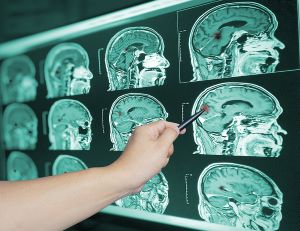 Up to one billion people worldwide suffer from neurological disorders. In the United States, more than one million adults are diagnosed annually with a chronic brain disease or disorder. Major brain diseases include multiple sclerosis, Parkinson’s disease, stroke, traumatic brain injury, Alzheimer’s disease, epilepsy, Huntington’s disease, and many more.
Up to one billion people worldwide suffer from neurological disorders. In the United States, more than one million adults are diagnosed annually with a chronic brain disease or disorder. Major brain diseases include multiple sclerosis, Parkinson’s disease, stroke, traumatic brain injury, Alzheimer’s disease, epilepsy, Huntington’s disease, and many more.
Many brain diseases are progressive and worsen with age. According to the Federal Interagency Forum on Aging-Related Statistics, over 35 per cent of people 85 years of age or older have moderate to severe memory impairment.
Studying the brain is difficult but new tools are emerging. A recent study published in the Journal of Molecular Psychiatry looked at how genetically encoded sensors enable micro and nano-scopic decoding of transmission in healthy and diseased brains.
“Our study was about developing a method to visualize neuromodulatory communication between neurons at the nanoscale,” study author J. Julius Zhu told us. “While we are validating applicability of the method, we found an old theory about neuromodulatory communication is incorrect.”
The study’s authors are Li Lin, Smriti Gupta, W. Sharon Zheng, Ke Si, and Zhu. Zhu is from the Department of Pharmacology at the University of Virginia School of Medicine in Charlottesville, Virginia.
“Neuromodulatory communication is important for many high cognitive behaviors,” Zhu told us, “and its deficit is responsible various psychiatric, mental and neurology disorders.”
A multitude of behaviors is controlled by neural communication but it’s hard for researchers to track all the transmissions and processes because of a lack of tools to monitor these processes. In this study, researchers were able to use neurotransmitter sensors that were genetically encoded. These tools were developed recently and when they are combined with super-resolution and deconvolution microscopic techniques, researchers were able to see the first micro and nano-scopic images of neuromodulatory transmission.
“Neuromodulatory communication is also responsible for many other healthy issues,” Zhu told us, “such as cardiovascular regulation and diseases, immune regulation and deficiency, metabolic regulation and eating disorders, and tumorigenesis since nerves innervate almost every tissues in our body, and recent studies show they do far more than we thought.”
Some of the techniques used to study the brain are electroencephalogram (EEG), magnetoencephalography (MEG), functional magnetic resonance imaging (fMRI), photon migration tomography (PMT), and transcranial magnetic stimulation.
An EEG uses electrodes to cover the head and measures mass changes in synaptic activity in the nerves of the brain. An EEG is useful for diagnosing and treating diseases. MEGs map brain activity by recording electromagnetic fields produced by brain currents. MEGs help to zero in on areas an EEG might miss. An fMRI is even more specific and more widely used today. An fMRI can detect issues within one cubic millimeter. A PMT is also used more widely today and is used to measure cortical activity and assess light in the brain. Transcranial magnetic stimulation stimulates neurons using magnetic fields.
In the US, Alzheimer’s disease affects 250,000 people annually. Over 600,000 people in the US suffer from strokes each year. Over 135,000 people are affected by epilepsy and over 33 thousand people are diagnosed with a brain tumor annually.
New brain imaging tools will help with better assessment, diagnosis and treatment of brain disorders.
“Our previous understanding of brain communication might be incorrect in many aspects,” Zhu told us. “The results of our study help us to better understand brain communication and brain diseases.”
Patricia Tomasi is a mom, maternal mental health advocate, journalist, and speaker. She writes regularly for the Huffington Post Canada, focusing primarily on maternal mental health after suffering from severe postpartum anxiety twice. You can find her Huffington Post biography here. Patricia is also a Patient Expert Advisor for the North American-based, Maternal Mental Health Research Collective and is the founder of the online peer support group - Facebook Postpartum Depression & Anxiety Support Group - with over 1500 members worldwide. Blog: www.patriciatomasiblog.wordpress.com
Email: tomasi.patricia@gmail.com